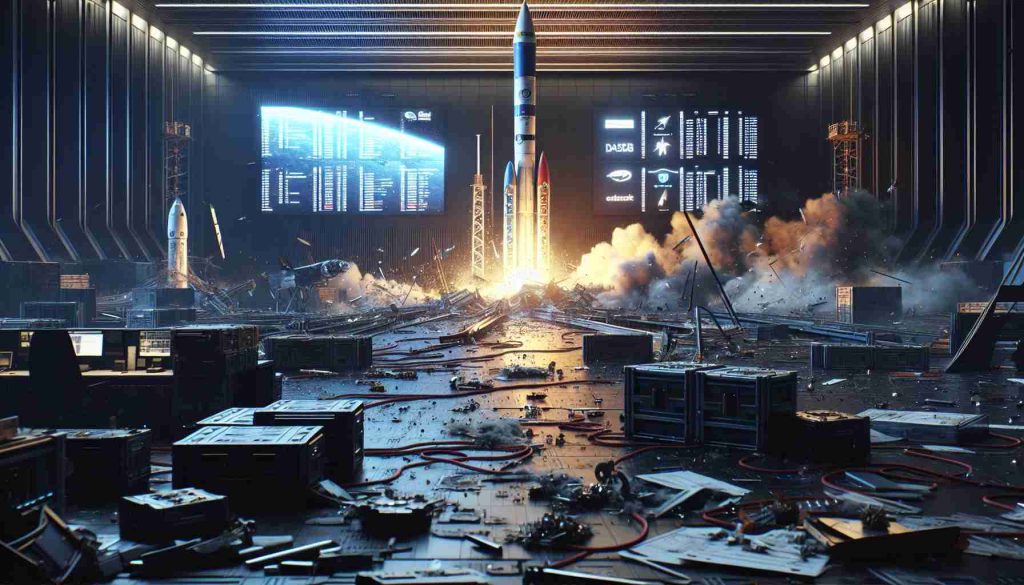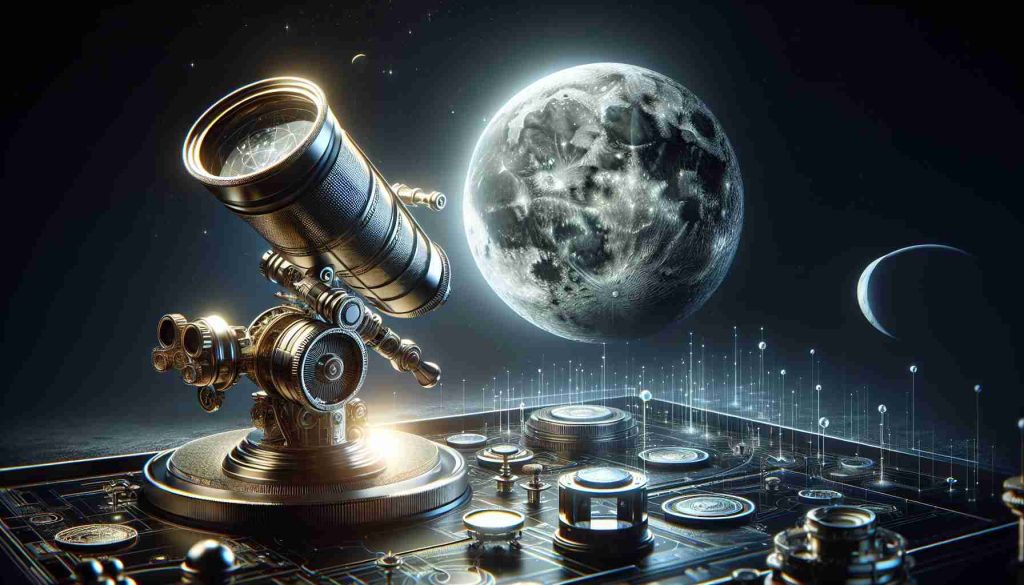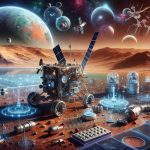Unlocking New Frontiers in Space Exploration
The recent achievement by the Indian Space Research Organisation (ISRO) of successfully demonstrating in-space docking could lead to a new era in commercial space activities. Industry analysts highlight this milestone as a catalyst for advanced on-orbit servicing (OOS), where spacecraft can undergo essential maintenance while in orbit, significantly boosting satellite reusability and reducing space debris.
OOS encompasses a variety of operations performed on satellites, including refueling, repairs, and upgrades, which are crucial for extending their operational life. The docking technology is recognized as the core of OOS, minimizing the need for additional satellite launches and enhancing functionality.
Several startups are already innovating within this realm. For instance, one company is developing space fuel stations that allow satellites to dock, refuel, and prolong their lifespans. Moreover, established players like Northrop Grumman have demonstrated OOS capabilities with their Mission Extension Vehicles, emphasizing the potential for more sustainable space missions.
Experts suggest that this emerging docking technology can even facilitate deep space exploration and cargo transfers, enabling extended missions through the interconnection of various modules. However, to fully harness these advancements, significant efforts in research and development within the Indian private sector are required.
According to forecasts, the OOS market is set to expand dramatically, with projections estimating a growth from $2.7 billion in 2024 to $8 billion by 2034. This remarkable transformation in the space sector signifies vast opportunities for innovation and collaboration.
Transformative Impacts of Space Docking Technology
The recent advancements in space docking technology by ISRO herald not only a revolution in technical capabilities but also profound implications for society and the global economy. As countries and private entities expand their footprints in space, the potential for commercialization of outer space increases, leading to a thriving market for satellite services and ancillary industries. The burgeoning on-orbit servicing (OOS) sector is poised to stimulate international partnerships, enabling countries with emerging space programs to collaborate on complex missions that were once reserved for superpowered nations.
The implications of this technology extend deeply into environmental considerations. By allowing for satellite repairs and upgrades in orbit rather than launching replacements, we can significantly reduce the accumulation of space debris—a pressing issue threatening both operational satellites and future missions. The reduction of space junk not only protects our current investments but also protects Earth’s safety by minimizing risks from hazardous fragments traveling at high velocities.
Looking to the future, we can expect a surge in innovative applications for docking technology, especially in deep space exploration and resource mining from asteroids. As nations push the boundaries of exploration, the economic landscape may shift drastically, with a potential for new revenue streams from extraterrestrial resources. In this new epoch, the ethos of sustainable space use must be prioritized, ensuring that our ventures into the cosmos benefit both present and future generations.
Revolutionizing Space: The Future of On-Orbit Servicing and Indian Innovations in Space Exploration
Unlocking New Frontiers in Space Exploration
The Indian Space Research Organisation (ISRO) has made headlines with its recent breakthrough in in-space docking technology, paving the way for a revolution in commercial space activities. This milestone stands as a key driver for advanced on-orbit servicing (OOS), which encompasses a variety of critical operations such as refueling, repairs, and upgrades of spacecraft in orbit. This capability is essential for extending the operational lifespan of satellites, significantly enhancing their reusability and contributing to the mitigation of space debris.
What is Advanced On-Orbit Servicing (OOS)?
Advanced on-orbit servicing involves a range of satellite maintenance operations performed while in space. Key features of OOS include:
– Refueling: Satellites can dock and replenish their fuel without needing to return to Earth.
– Repairs: Damaged satellites can be fixed in orbit, which minimizes mission downtime.
– Upgrades: Technological advancements can be implemented while the satellite remains in service, keeping it competitive and efficient.
These operations reduce the necessity for new satellite launches and enhance the overall functionality of existing space assets.
Innovations and Startups in OOS
A burgeoning sector of startups is emerging to capitalize on this new technology. For example, companies are developing innovative “space fuel stations” that allow satellites to dock and refuel, thus prolonging their operational life. Established companies like Northrop Grumman have already shown the feasibility of OOS with their Mission Extension Vehicles, which further underscores the potential for sustainable and economical long-term space missions.
Implications for Deep Space Exploration
Importantly, this new docking technology is poised to facilitate deep space exploration endeavors. By enabling cargo transfers and the interconnection of various modules, this advancement could lead to longer missions and the establishment of a more collaborative approach to space travel.
The OOS Market: Trends and Growth Projections
Industry analysis indicates a significant market expansion for OOS, projected to increase from $2.7 billion in 2024 to approximately $8 billion by 2034. This growth reflects a massive potential shift within the space sector, where innovations can lead to new business models, partnerships, and operational efficiencies.
Key Insights and Future Directions
1. Research and Development: To fully harness the power of in-space docking and OOS technologies, substantial investments in research and development from both the public and private sectors in India are essential.
2. Collaboration Opportunities: The advancements in OOS will likely foster collaboration between international space agencies and private companies, allowing for shared resources, expertise, and visions.
3. Sustainability Focus: As the possibility for on-orbit servicing grows, so does the emphasis on sustainability within the space industry. Reducing space debris and extending the life of current satellites aligns with global environmental goals.
Limitations and Challenges
While the prospects of OOS are promising, several limitations remain:
– Technological Hurdles: Developing robust docking mechanisms that function reliably in the harsh environment of space is a significant engineering challenge.
– Regulatory Issues: The complexities of international space law surrounding ownership and operations in orbit may complicate OOS initiatives.
– Market Readiness: The full integration of these technologies into the mainstream space economy will require acceptance and investment from global stakeholders.
Conclusion
The advancements made by ISRO in in-space docking are more than just technological feats; they represent a shift towards a sustainable and innovative future in space exploration. As the market for on-orbit servicing continues to evolve, there exists a wealth of opportunities for both established entities and startups to thrive in this new era of space activities. For more insights into the future of space exploration, visit ISRO.
















